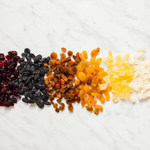|
News
Who is the CEO of Rentokil?
Is collateral risk a type of cre...
Is it okay to sleep 6 hours at n...
What will be the most attractive...
What percentage of mothers have ...
More
Visitors
Today:
4
|
josemar_brytto,
calum like this
31 de maio de 2023 às 22:49 21 views
The Journey of Plant-Based Food Coloring from Nature to Plate
Since the early 2000s, https://www.binmei-color.com/ has been gaining significant attention as people seek healthier and more sustainable alternatives to artificial dyes. These colors are derived from various natural sources, such as fruits and vegetables, and offer a vibrant and visually appealing way to enhance the appearance of our culinary creations. In this essay, we will explore the fascinating process of transforming nature's hues into edible pigments, and how these pigments find their way from nature to our plates.
The journey to using plant-based food color starts with the selection of suitable plant sources. Numerous plants possess pigments that can be extracted and utilized as natural colorants. One common example is the vibrant red hue obtained from beets. Beets are known for their rich concentration of betalains, which serve as natural colorants. The process of obtaining the color from beets involves juicing or extracting the pigments using solvents. Once extracted, the color can be further processed and concentrated for later use.
Other plant-based food colorings are derived from sources such as fruits, vegetables, flowers, and spices. For instance, blueberries and blackberries provide shades of purple and blue, while turmeric offers a vibrant yellow color. Spinach and spirulina contribute to green shades, and carrots can be used to create a range of orange hues. These natural sources provide an extensive palette of colors to choose from, enabling chefs and food manufacturers to add visual appeal to their products without relying on artificial additives.
In order to ensure the stability and suitability of the plant-based pigments for use as food coloring, various processing steps are taken once they are extracted. A stabilizer, such as gums or starch, may be added to enhance the pigment's shelf life and prevent color fading. Throughout the process of producing and consuming plant-based food coloring, this step is crucial to maintaining color intensity and vibrancy.
After the processing phase, the plant-based food coloring is ready to be incorporated into a wide array of food products. Bakers can use them to add an artistic touch to cakes, cookies, and pastries, creating visually stunning desserts that captivate the eye. In the savory world, chefs can experiment with plant-based food coloring to elevate the presentation of their dishes, making them more visually appealing and Instagram-worthy. The versatility of these natural colorants allows for endless creativity in the kitchen, providing chefs and home cooks with the opportunity to explore and express their culinary artistry.
The journey of plant-based food coloring doesn't end when it's incorporated into food products; it continues throughout the distribution process. Food manufacturers and producers ensure that the plant-based food coloring is stable and maintains its vibrant colors throughout the distribution process. Packaging and storage conditions play a crucial role in preserving the color intensity, preventing exposure to light, heat, and oxygen, which can cause color degradation. Thus, ensuring the final product retains its visual appeal when it reaches the consumer.
By choosing products that incorporate natural colorants, we support the demand for healthier and more sustainable alternatives, which encourages food manufacturers and producers to continue exploring and utilizing plant-based food coloring options, leading to a wider availability of these products in the market. Moreover, our choices as consumers can drive innovation and the development of new plant sources for food coloring, expanding the range of colors and possibilities in the culinary world.
The journey of plant-based food coloring encompasses multiple stages, from the selection of plant sources to the incorporation of vibrant pigments into food products and their eventual consumption. It is a journey that highlights our growing appreciation for natural alternatives, our desire to create visually appealing dishes that are both delicious and visually stunning, and our commitment to promoting a healthier and more sustainable approach to food production. By embracing plant-based food coloring, we not only enhance the aesthetic appeal of our culinary creations but also promote a healthier and more sustainable way of living. As we continue to explore the potential of nature's hues, the journey of plant-based food coloring is sure to evolve, bringing new colors, tastes, and experiences to our plates.
Related articles:
Discover the diverse flavors of plant-based food coloring
Пищевые красители на растительной основе сохраняют целостность ингредиентов
Kasvipohjaisen elintarvikevärjäyksen taito: Tekniikat ja niksit
|







%LOGIN% %TIMESTAMP%
%COMMENT%